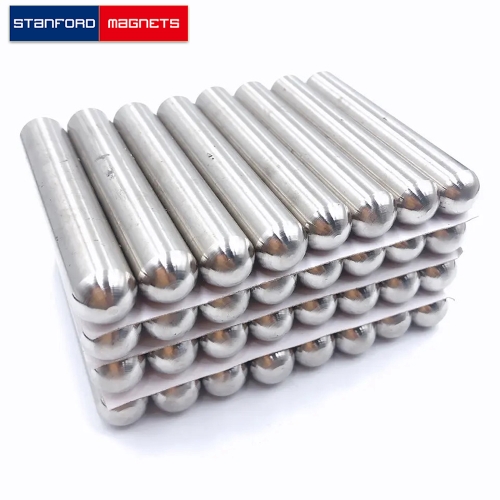Cow Magnets: Protecting Cattle from Hardware Disease
Introduction
In farming, keeping cattle healthy is crucial for productivity. Hardware disease can affect up to 10% of cattle in some areas, leading to big problems like weight loss, lower milk production, and even death. To tackle this, many farmers use cow magnets—a simple but effective tool that helps prevent this serious issue by capturing metal objects cows might accidentally swallow.

What is a Cow Magnet?
A cow magnet is a cylindrical magnet designed specifically for use in cattle. These cow magnets are typically made from strong magnetic materials such as alnico (an alloy of aluminum, nickel, and cobalt) or ferrite, and they are usually about 2-3 inches long. Cow magnets are designed to be administered orally and settle in the reticulum, one of the four compartments of a cow's stomach. Their primary function is to attract and hold any metal objects that the cow may inadvertently ingest while grazing.

What is Hardware Disease?
Hardware disease is a common condition in cattle that occurs when they swallow metal objects such as nails, wire, or screws. These objects can end up in the reticulum, where the natural contractions of the stomach may cause them to puncture the stomach wall or other internal organs. This can lead to severe infections, internal bleeding, and even death if not promptly addressed.
The condition is particularly concerning because cows are not discerning eaters and can easily consume metal debris found in pastures, hay, or feed. It can be difficult to conclusively diagnose but can be prevented by the oral administration of a magnet around the time that the animal reaches the age of one year.
How to Prevent Hardware Disease with Cow Magnets?
The primary method for preventing hardware disease is the use of cow magnets. When a cow magnet is administered, it remains in the reticulum and attracts any metal objects the cow ingests. By keeping these sharp objects securely attached to the magnet, it prevents them from moving around and causing internal injuries. This simple but effective measure can significantly reduce the risk of hardware disease and save cattle from potential suffering.
A rancher or dairy farmer feeds a magnet to each calf at branding time; the magnet settles in the rumen or reticulum and remains there for the life of the animal. The magnet is administered after fasting the cow for 18–24 hours. This is most effective if done to the entire herd before the age of one.
The administration of cow magnets is straightforward: the magnet is encased in a bolus and then inserted into the cow's mouth, usually with the assistance of a specialized tool. Once swallowed, the magnet settles in the reticulum and begins its protective function.
Types of Cow Magnets
There are a few different types of cow magnets, each designed to suit various needs and preferences in cattle management:
1. Alnico Cow Magnets: Made from an alloy of aluminum, nickel, and cobalt, these magnets are known for their strength and durability. They are one of the most commonly used types and can retain their magnetic properties over long periods.
2. Ferrite Cow Magnets: These magnets are made from a ceramic-like material and are less expensive than alnico magnets. While they are strong, they are more brittle and may not last as long as alnico magnets.
3. Ring Cow Magnets: Designed with a hole in the middle, these magnets are often used to reduce the chance of injury during administration and to allow them to be strung together for ease of handling.
4. Stacked Cow Magnets: These consist of several smaller magnets stacked together. They provide a greater surface area to attract metal objects and can be a good option for environments with higher risks of metal ingestion.
Conclusion
In summary, cow magnets are an invaluable tool in preventing hardware disease in cattle. By attracting and securing any ingested metal objects, they play a crucial role in safeguarding cattle’s health. Whether using alnico, ferrite, ring, or stacked magnets, the application of cow magnets is a simple, cost-effective measure that can have a significant impact on the health of a herd.
Thank you for reading our article and we hope it can help you to have a better understanding of the cow magnets. If you want to learn more basic information about magnets, please visit Stanford Magnets for more information. Stanford Magnets provides customers with high-quality permanent magnets like SmCo magnets, neodymium magnets, AlNiCo magnets, and ferrite magnets (ceramic magnets) at a very competitive price since the 1990s.














